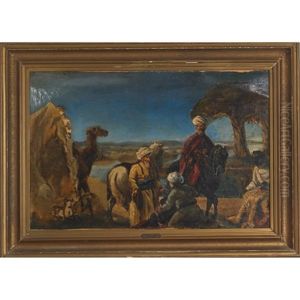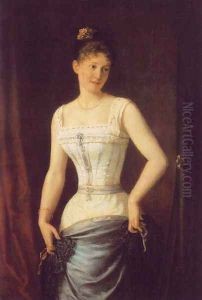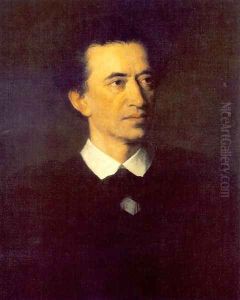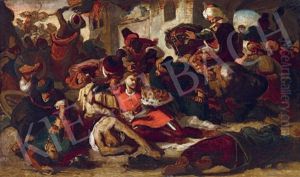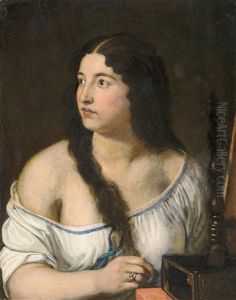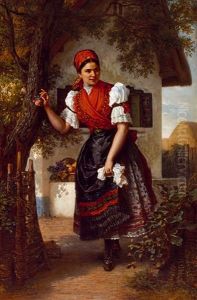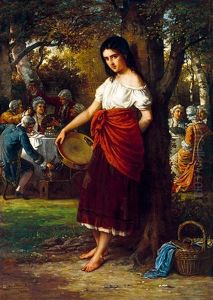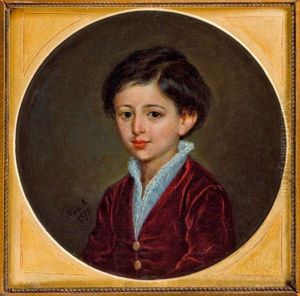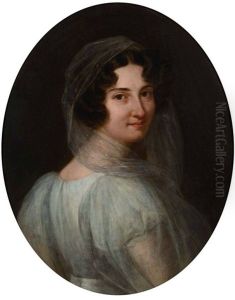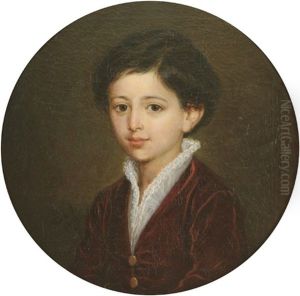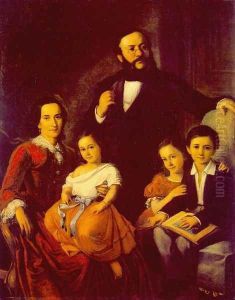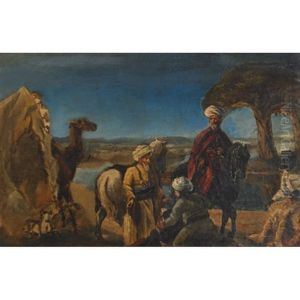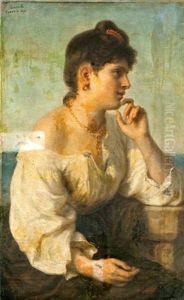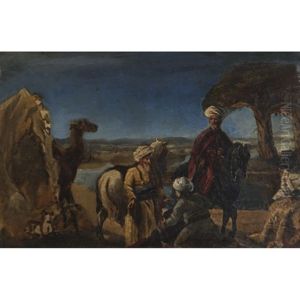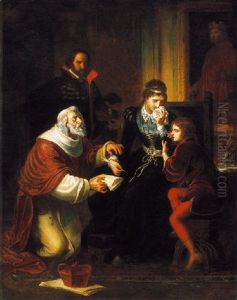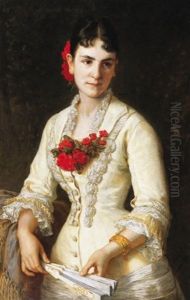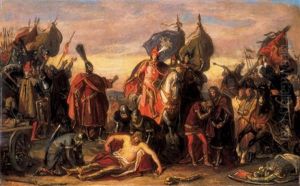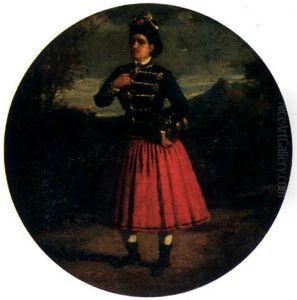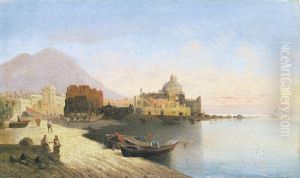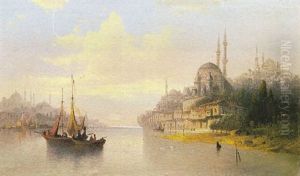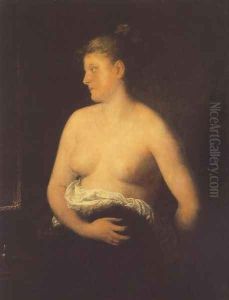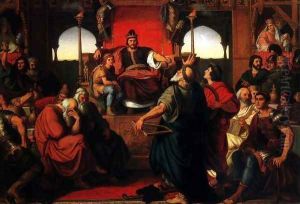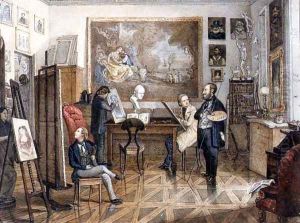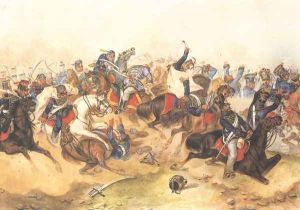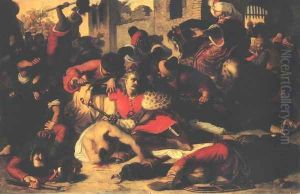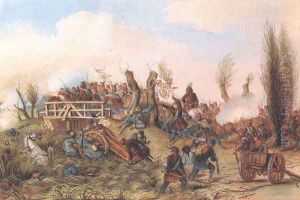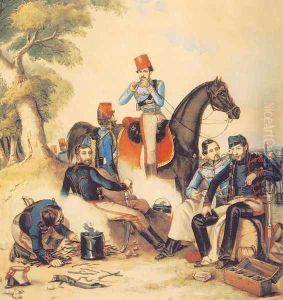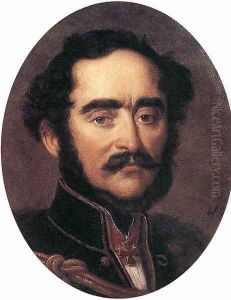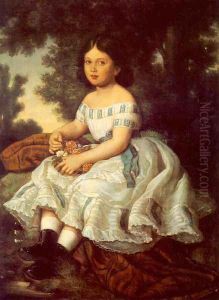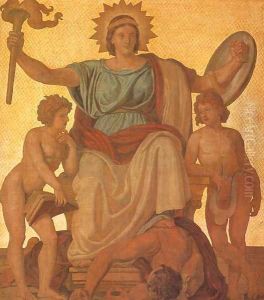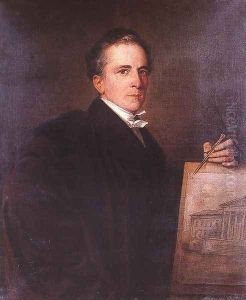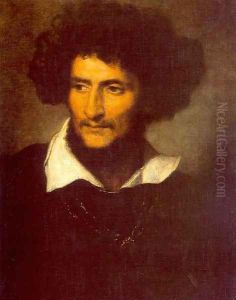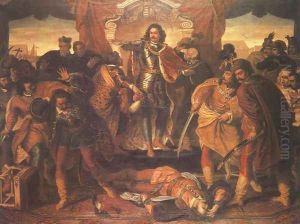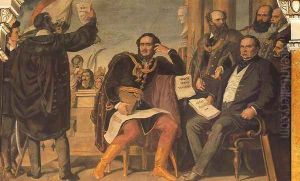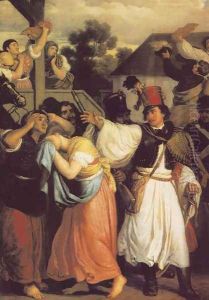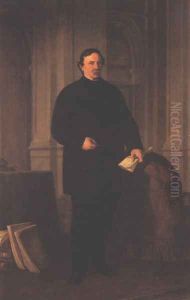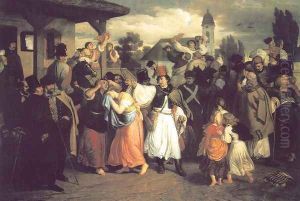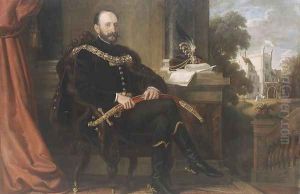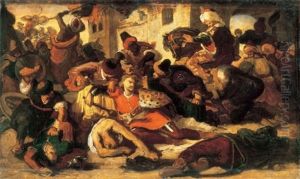Mor Than Paintings
Mór Than (1828–1899) was a Hungarian painter who is best known for his mythological and historical paintings. Born on June 19, 1828, in Óbecse (now Bečej, Serbia), he was part of the romantic movement that was prominent in the 19th century. Than studied in Vienna at the Academy of Fine Arts and later in Munich, which was a major center for artists at the time. He was influenced by the works of the Old Masters as well as his contemporaries.
Than's work was characterized by his attention to detail, use of rich colors, and often dramatic compositions. He became particularly adept at capturing the nuances of light and shadow, which added a sense of depth and realism to his paintings. His historical paintings often depicted moments from Hungarian history, aimed at fostering a sense of national pride during a time when Hungary was part of the Austro-Hungarian Empire.
Throughout his career, Mór Than also painted portraits, landscapes, and genre scenes, but his mythological subjects were particularly praised for their imagination and execution. One of his most famous works is 'The Feast of Attila,' which he completed in 1870. This painting reflects Than's commitment to depicting Hungarian historical themes and showcases his skillful composition and use of color.
Than's works can be found in various museums and collections in Hungary and across Europe. His contributions to Hungarian art were significant, as he played a role in the development of a national style that combined romanticism with Hungarian historical themes. Despite his success, he struggled with financial difficulties throughout his life, which were somewhat alleviated when he was appointed as a member of the Vienna Academy in 1872. Mór Than died on March 11, 1899, in Trieste (now in Italy). His legacy is preserved in the art history of Hungary and in the admiration for his works that continues to this day.
